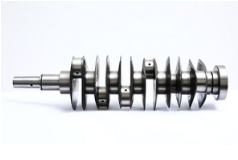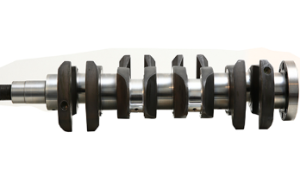Unlocking the Secrets of Crankshaft Position Sensor Symptoms and Their Impact on Your Engine.
Crankshaft position sensor symptoms are crucial indicators of potential issues in gasoline-powered automobiles and motorcycles. A malfunctioning sensor can lead to a myriad of problems, including reduced engine efficiency, power delivery, and overall reliability. In this engaging article, we will delve into the functions, advantages, and user experiences of various types of crankshafts, including forged, billet, and full machining crankshafts, focusing on their role in gasoline engines.
Demystifying the Role of the Crankshaft Position Sensor
The crankshaft position sensor plays a vital role in monitoring the rotational speed and position of the crankshaft, which ultimately powers the wheels of an automobile or the chain of a motorcycle. It provides essential information to the engine control module (ECM) to ensure accurate fuel injection and ignition timing. Recognizing the symptoms of a failing crankshaft position sensor can help you address issues before they escalate into significant engine problems.

Detecting the Telltale Signs of a Failing Crankshaft Position Sensor
Some common symptoms of a malfunctioning crankshaft position sensor include:
- Intermittent stalling: When the sensor fails to relay accurate information to the ECM, the engine may stall unexpectedly.
- Difficulty starting the engine: A faulty sensor can lead to incorrect ignition timing, making it challenging to start the engine.
- Reduced engine performance: A malfunctioning sensor can cause poor fuel injection and ignition timing, resulting in decreased power and efficiency.
- Check engine light: The check engine light may illuminate if the ECM detects an issue with the crankshaft position sensor.
Maximizing Engine Performance with Advanced Crankshaft Designs
State-of-the-art crankshaft designs offer numerous benefits for gasoline engines, such as:
- Optimized power delivery: The right crankshaft can significantly boost engine performance by ensuring a smooth and efficient transfer of power from the pistons to the wheels or chain.
- Increased durability: High-quality crankshafts are designed to withstand the demands of constant use and high-performance applications, resulting in a longer-lasting and more reliable engine.
- Minimized vibrations: Advanced crankshaft designs help reduce engine vibrations, providing a more comfortable and enjoyable driving or riding experience.

Crankshaft Varieties: Forged, Billet, and Full Machining
There are several types of crankshafts available for gasoline engines in automobiles and motorcycles:
- Forged crankshaft: Forged crankshafts are created by heating and hammering a metal billet into the desired shape. This process results in a strong and durable crankshaft with excellent resistance to fatigue and wear.
- Billet crankshaft: Billet crankshafts are made by machining a solid piece of metal into the required shape. This process offers increased precision and customization options, making it a popular choice for high-performance applications.
- Full machining crankshaft: Full machining crankshafts involve a combination of forging and machining processes, providing an ideal balance of strength, precision, and durability.
Gasoline Engines: A Specialized Focus
Crankshafts discussed in this article are designed specifically for use in gasoline-powered automotive and motorcycle engines, making them unsuitable for diesel engines. This specialization ensures that the components are optimized for the unique requirements of gasoline engines, providing users with an unparalleled driving or riding experience.
In conclusion, recognizing the symptoms of a failing crankshaft position sensor and understanding the function, advantages, and differences between various types of crankshafts can help you enhance your gasoline engine’s performance and longevity. Trust our expertise and dedication to excellence to guide you in selecting the ideal crankshaft
